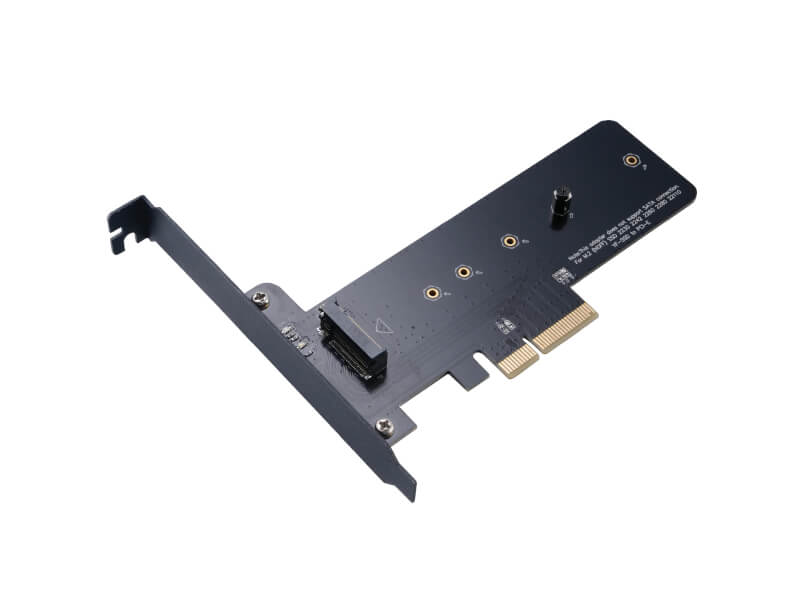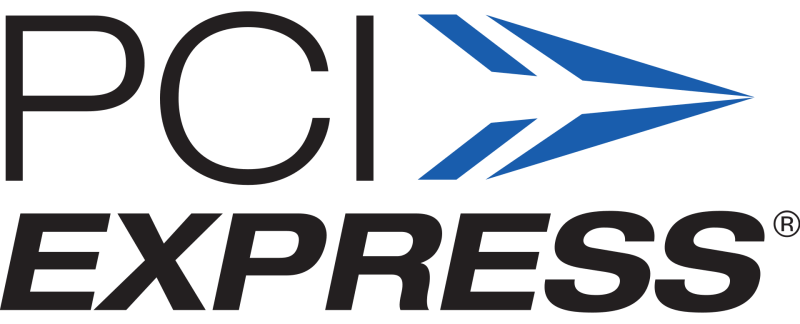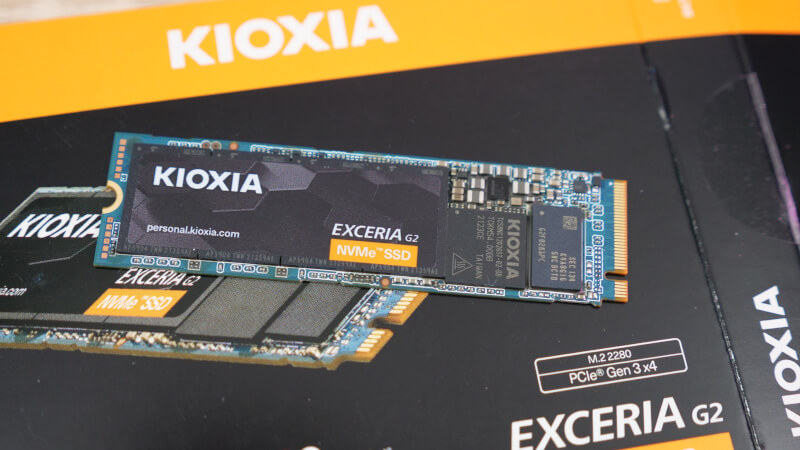Choose the right SSD - M.2 or SATA? PCIe what?

Technology
Before you jump into buying an SSD, it pays to check what can be used with your system. This is especially important if you have to buy an upgrade to a perhaps slightly older system. A lot has happened over the past few years with SSDs, and if you have an older system, you may not be able to get the most out of the latest SSDs.
If that's the case, you can quickly end up paying for things you can't make optimal use of. Fortunately, most things are backwards compatible, which means you can usually use a new SSD in an older system. You just won't be able to utilize its full speed.
SATA or M.2?
One of the first things to look at is which interface you want to use for your SSD storage solution. Usually you can choose between SATA or M.2.
SATA
SATA is now an older interface. It can be used both for 2.5” SATA SSDs and for mechanical hard drives. The 2.5” SSD is a completely separate unit, which often has to be placed somewhere in your cabinet, and from there you have to pull a SATA power cable from your power supply, and a SATA data cable to your motherboard.
The advantage of SATA is that all common motherboards have the option of SATA. On top of that, there are usually quite a lot of SATA connections, even on cheap motherboards, and you can therefore usually connect several SATA SSDs.
The downside of SATA is clearly the transfer speeds. SATA is an older protocol and therefore read speeds are typically limited to around 550 MB/s for a SATA SSD.
M.2
The vast majority of new motherboards have the option of M.2 SSDs. M.2 is a practical interface where an SSD is inserted directly into an M.2 connector on the motherboard and screwed in place. Both data and power are delivered through the same connector and you don't have to pull data and power cables.
The advantages of M.2 are that they are easy to connect, as neither power nor data cables need to be drawn. On top of that, the speeds of M.2 SSDs are much higher than those of SATA. How fast depends on the underlying technology on the motherboard and the M.2 SSD in question.
Newer M.2 SSDs make use of PCIe 4.0, with read speeds up to 7000 MB/s. On top of that, PCIe 5.0 SSDs are just around the corner, where speeds can rise to 14,000 MB/s
The disadvantages of M.2 are that there are typically fewer M.2 slots on a motherboard than SATA. High end motherboards may well have four to five M.2 slots, while more budget oriented motherboards may only have one.

If you have a motherboard with no M.2 slots, you can still use M.2 SSDs. Then all you need is an adapter card on which you mount the M.2 SSD. After this, it must use one of the regular PCIe slots on your motherboard.
SATA, PCIe 4.0 and PCIe 5.0
One of the latest developments in relation to storage solutions is the upgrade from PCIe 3.0 to PCIe 4.0 and now on the brand new motherboards PCIe 5.0. At the time of writing, there are no PCIe 5.0 SSDs on the market yet, but they are just around the corner.

PCIe 4.0 was introduced on the consumer market with the AMD Ryzen X570 platform. However, it is also part of Intel's Z690 platform. So there are quite a few motherboards on the market that support PCIe 4.0 and can take advantage of the speeds of high end M.2 SSDs.
Before jumping into it, however, it pays to check whether the motherboard you have in mind, or which you may already have in your system, supports PCIe 4.0. That, together with the choice of SSD, will be decisive for which speeds you can look forward to.
Performance and price in three steps
If we have to take a closer look at real possibilities, within the framework that we have covered previously, we have three good offers from KIOXIA. They can each fill different roles depending on which budget and system you are aiming for.
KIOXIA Exceria Pro PCIe 4.0 M.2
If you have a motherboard that supports PCIe 4.0 and you want to get the most out of the speeds, the KIOXIA Exceria Pro PCIe 4.0 M.2 is a really good bet.
It is an M.2 SSD which offers read speeds up to 7300 MB/s and write speeds up to 6400 MB/s. KIOXIA Exceria Pro is available in a 1TB and a 2TB version.
In our review , we saw really good results for the KIOXIA Exceria Pro PCIe 4.0 M.2.
Read more about KIOXIA Exceria Pro PCIe 4.0 M.2 at KIOXIA here.
KIOXIA Exceria G2 M.2 SSD
If you are on a slightly older motherboard, or perhaps just a smaller budget, then the KIOXIA Exceria G2 M.2 SSD can be a sensible bet. It is an M.2 SSD on a PCIe 3.0 interface, with read speeds up to 2100 MB/s and write speeds up to 1700 MB/s.

KIOXIA Exceria G2 is available in a 1TB and a 2TB version. You can read our review of the KIOXIA Exceria G2 right here.
Read more about KIOXIA Exceria G2 M.2 SSD at KIOXIA here.
KIOXIA Exceria SATA SSD
If you are on an older system, or have simply run out of M.2 slots, and want to supplement with more storage space, the KIOXIA Exceria SATA SSD can be a really nice alternative.
Here we are of course limited by the SATA speeds, with read speeds of up to 555 MB/s and write speeds of up to 540 MB/s.
The KIOXIA Exceria SATA SSDs are available in 240GB, 480GB and 960GB variants.
Read more about KIOXIA Exceria SATA SSD at KIOXIA here.
SSD storage is an area where there are large gaps in both performance and price. Therefore, it pays to research things a bit before pressing the buy button. You can save a lot of money by choosing a solution that is adapted to your needs and to the other hardware with which the SSD is to be used.
On paper, high read and write speeds look great, but for everyday use it may not always make sense to spend the money on the fastest SSD you can find. A solution could perhaps be to instead choose a slightly slower one, but with a greater capacity for the same money.
One thing is what can be seen in benchmarks, and another is how the experience is in everyday life.
Fortunately, manufacturers like KIOXIA have options for virtually every need and budget. Read much more about their range of storage solutions at KIOXIA right here.
Latest storage
-
24 Janstorage
-
17 Decstorage
KIOXIA Launches EXCERIA PLUS G4 SSD PCIe 5.0
-
25 Novstorage
ADATA SE920 External SSD
-
08 Augstorage
Kioxia Develops SSD with optical interface
-
01 Augstorage
Western Digital's revenue below expectations
-
31 Julstorage
Micron Launches 9th Gen NAND Flash
-
02 Julstorage
SK Hynix Announces SSD for AI PCs
-
04 Junstorage
KIOXIA ready with SSD Heatsink
Most read storage
Latest storage
-
24 Janstorage
Corsair launches EX400U USB4 SSD
-
17 Decstorage
KIOXIA Launches EXCERIA PLUS G4 SSD PCIe 5.0
-
25 Novstorage
ADATA SE920 External SSD
-
08 Augstorage
Kioxia Develops SSD with optical interface
-
01 Augstorage
Western Digital's revenue below expectations
-
31 Julstorage
Micron Launches 9th Gen NAND Flash
-
02 Julstorage
SK Hynix Announces SSD for AI PCs
-
04 Junstorage
KIOXIA ready with SSD Heatsink






